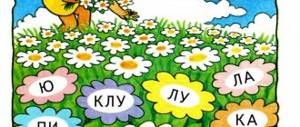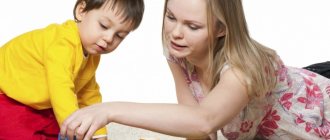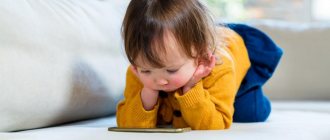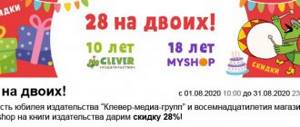A set of games and exercises for children with hearing loss
COMPLEX OF GAMES AND EXERCISES
for children with hearing impairment
COMPLEX OF CORRECTION AND DEVELOPMENT EXERCISES
for children with hearing impairment of the younger (3-4 years old) group
PHYSICAL DEVELOPMENT
Section of the program “Physical exercise and health promotion”
1. “Three elements: earth, water, air”
Target:
development of attention.
Instructions
. The players are placed in a circle, the leader calls the word:
“Earth” – the players take the position: arms to the sides;
“Air” – players perform circular movements with their arms backwards;
“Water” - movements are performed that imitate waves.
The player who breaks the rules is eliminated from the game. The person who remains last in the circle wins.
Methodical instructions.
The intensity of the game is regulated by the tempo of pronunciation leading to the task words.
2. “Forbidden Color”
Target:
development of speed of motor reaction, attention, counting and pronunciation skills, ability to distinguish the color and shape of geometric shapes.
Inventory.
30 - 40 multi-colored geometric shapes cut out of cardboard (squares, circles, triangles, rectangles, etc.).
Instructions.
Geometric shapes are scattered across the playground.
The presenter names a color (for example, red). At the signal, all players must collect as many pieces of the indicated color as possible. Methodical instructions.
The one with the most wins.
3. "Mirror"
Target:
development of attention and imagination, training in memorizing sequences of movements.
Instructions.
The players sit freely on the court and perform the following tasks: repeating single movements after the leader. The players must reproduce several movements in a given sequence. The presenter names an animal, bird, insect or fish, and the players imitate the movements of this animal.
Methodical instructions.
The best player is determined by a general vote and is awarded a prize or bonus points.
Section of the program “Development of fine motor skills”
4. Catch the ball
Goals:
develop motor skills of the fingers, develop interest in communication in the game, follow the adult’s instructions exactly.
Equipment:
groove, ball.
Speech material:
ball, catch, roll, caught, didn’t catch, fell, well done.
Progress of the game.
The teacher puts the ball on the groove and says: “Let's play! Look,” he throws the ball along the groove and turns to the child: “Catch it!” If the child fails to catch the ball, the teacher shows how to do it. After several repetitions of the child catching the ball, the teacher gives him the ball and asks: “Kati!” The child should, imitating the previously seen movements of the teacher, roll the ball along the groove, and the teacher should catch the ball at the other end of the groove. If the child is unable to roll the ball, the teacher shows how to do it, after which the child again tries to independently roll the ball along the groove.
5. Mosaics
Goals:
development of fine motor skills of the fingers, learning to navigate on a plane, the ability to select colors by imitation of the teacher or by verbal instructions.
Equipment:
flat and volumetric mosaics according to the number of children.
Speech material:
put together a pattern, a mosaic, a drawing, the name of the objects depicted in the picture, the names of the primary colors, there, next to it, on the left, on the right, one, one, two, two, three, four, five, etc.
Progress of the game.
Several options are possible. You can invite children to follow the teacher in making a certain drawing or pattern. Or you can simply give children the opportunity to collect at their own request, developing creativity and imagination. You can offer children a picture with a picture or pattern and ask them to assemble the same picture or pattern from a mosaic. For more developed children who know the names of primary colors, you can offer to make a drawing or pattern according to the instructions given orally and on tablets. For example: “Put two blue ones, then three green ones, one red one,” etc.
6. Who is most likely to roll up the ribbon?
Goals:
develop motor skills of fingers and hands, develop speed and accuracy of movements.
Equipment:
two ribbons, fixed at one end on sticks (length 50 cm), of the same width and the same color.
Speech material:
tape, do this, hold it, one, two, three, spin, who's faster? Who is first?
Progress of the game.
The teacher calls two children to him, shows them the tapes and says: “We’ll play. This is a tape. We need to roll up the tape. Whoever turns the fastest will get a gift.” "One, two, three - roll." First, the teacher shows how to twist the stick to roll the ribbon. Then the teacher invites two children to perform the action shown. Two other children help - they hold the free ends of the ribbons, standing on the same line marked by the teacher, trying not to leave it. The winner is the one who rolls the ribbon first by twisting the stick and winding the ribbon around it.
You can also arrange team competitions. Children are given a larger number of ribbons. At the teacher’s command, several people from one team and another begin to twist the ribbons. The winners receive prizes - a badge, sticker or something similar.
A complication could be the task of rolling the tape in a certain time. For example, the teacher says: “I will count (clap).” The teacher and the children begin to clap, the child twists the ribbon. If you make it in time, you receive a prize; if you don’t make it, the ribbon goes to another child and everything starts all over again.
Section of the program “Healthy Lifestyle”
7. “I can - I can’t.”
Goals:
focus children's attention on their skills and physical capabilities of their body; develop self-esteem.
Equipment
: ball.
Progress of the game.
The presenter throws the ball and says: “I can” or “I can’t.” The child, having caught the ball, continues the phrase, explaining why he can or cannot do it. For example: “I can run because I have legs. I can't fly because I don't have wings."
8. “Guess who called?”
Goals
: train the hearing organs and activate the attention and auditory memory of children.
Progress of the game.
The presenter, standing with his back to the children, must determine by his voice who called him. If the answer is correct, the place of the leader is taken by the child whose vote was determined.
9. “Find a match.”
Target:
select a pair to an object based on tactile sensations (blindfolded).
Equipment:
buttons, cubes, apple, pencils, small objects.
Progress of the game.
Having chosen an object, the child must, blindfolded, choose the same one from a pile. At the end of the game, the presenter asks to explain what helped the child correctly identify different materials by touch.
10. Train
Goals:
teach children global reading; learn to answer questions.
Equipment:
a toy train with five or six carriages, toys (wolf, fox, hare, dog, cat, etc.), signs with the names of toys attached to the train carriages.
Speech material:
we will play; the train is moving. A dog, cat, hare, fox, wolf are going to visit the doll. Show the dog (cat...). Where does the fox (wolf, hare...) go? True False.
Progress of the game.
Children stand or sit in a semicircle in front of the teacher. The teacher takes toys out of a beautiful box, names them together with the children, and gives a toy to each child. An adult shows the children a train, each carriage of which has a sign with the name of an animal attached (DOG, CAT, WOLF, FOX...). The teacher tells the children: “We will play. A fox, a hare, a wolf... are going to visit the doll. Where does the fox (wolf, hare, etc.) go?” The child who has this toy approaches the train, finds a carriage with a sign FOX, “places” the toy in it and, together with the teacher, reads the sign in a conjugate-reflective manner. The game continues until all the children have placed their animals in the carriages. After this, the train leaves.
11. Carousel
Goals:
The same.
Equipment:
image of a carousel on cardboard, photographs of children, signs with children's names.
Speech material:
children's names. This is a carousel. Let's play. Who is this? This is Olya...Where is Olya (Katya....)? Olya (Katya...) is riding.
Progress of the game.
Children stand in a semicircle around the teacher. The teacher pins an image of a carousel made of cardboard on the table or board. It is advisable to secure the carousel in such a way that it can be rotated. A sign with the child’s name is inserted into each “seat” of the carousel, and photographs of the children are laid out on the teacher’s table. The teacher says: “This is a carousel. Let's play." Next, he asks one child to take a sign with his name, read it, match the photo to the sign and place it on the “seat” of the carousel. In the same way, children place all the photos in their places in the carousel. After this, the carousel can be launched.
After the carousel stops, the game can be continued, only this time the teacher gives the children signs with each other’s names and helps each child read the name. The child then points to the person whose name is written on the sign and places the sign next to the photo. When tags have been selected for all photos, the carousel starts again.
12. Family
Goals:
expand the vocabulary, improve children’s global reading, teach them to answer the teacher’s questions.
Equipment:
flannelograph, a cardboard house with windows, under each window there are slots into which you can insert signs and pictures depicting family members.
Speech material:
This is home. Mom (father, girl, boy, grandmother, grandfather) lives here. Who is this? Where does mom (dad, etc.) live?
Progress of the game.
A cardboard house with windows is attached to the flannelgraph. Under each window there is a sign with the name of a family member. The teacher hands out pictures of family members to the children, asking: “Who is this?” The pictures show grandmother, grandfather, mother, father, girl, boy. Then the teacher points to the house and says: “We will play. This is home. Mom, dad, grandmother, grandfather, boy, girl live here. Where does mom live? The child who has a picture of his mother comes up to the flannelograph and attaches this picture to the window under which the corresponding sign is attached. Next, the teacher reads this tablet together with the children. The game continues until all family members have taken their places in the house.
13. “Literary Lotto”
Goals:
introducing children to the world of fiction; development of creative and intellectual abilities through active participation in the game process.
Tasks:
Strengthen children's knowledge of literary works.
Teach children the ability to analyze what they read.
Develop speech culture.
Develop the psychological basis of speech: attention, memory, thinking.
Material:
cards with images of literary heroes.
Rule:
Players take turns taking out character cards and calling out their characteristics.
Example: “Fox” - cunning, red-haired; “Kolobok” - round, tasty, etc.
14. "Walk through fairy tales"
Goals and objectives:
The same.
Progress of the game.
The teacher, together with the children, examines illustrations in familiar books, clarifying the titles of the works.
15. Reproduction of the content of a fairy tale using a mnemonic table
Goals and objectives:
The same.
Material.
The teacher must prepare in advance pictures and signs based on fairy tales (“Turnip”, “Kolobok”, “Teremok”, etc.). For young children, you can use colored mnemonic tables in which color is closely related to the characteristic features of a fairy-tale image: the fox is red, the chickens are yellow, etc.
Progress of the game.
The teacher looks at the tablet with the children and asks questions:
- What fairy tale is hidden in this drawing?
- Who is this fairy tale about?
If the children have difficulty, he himself gives them hints.
Example of material.
Fairy tale "Teremok":
COMPLEX OF CORRECTION AND DEVELOPMENT EXERCISES
for children with hearing impairment of the average (4-5) group
PHYSICAL DEVELOPMENT
Section of the program “Physical exercise and health promotion”
1. “Catch up with me”
Target:
development of attention, acquisition of skills of catching and passing the ball, development of the ability to navigate in space.
Inventory:
two balls.
Instructions.
The players sit in a circle, with players from both teams alternating. The game uses two balls. In the starting position, the balls are located on opposite sides of the circle. At the driver’s command, the players simultaneously pass the balls to the right (or left), trying to ensure that the ball of one team catches the ball of the other team. If a team catches up with the other, the winner is awarded a point.
Methodical instructions.
The game is repeated several times. The team with the most points wins.
2. "Catch the ball"
Target:
development of attention, memory, acquisition of skills in throwing and catching the ball.
Inventory:
one medium sized ball.
Instructions.
The players sit in a circle. The driver is in the center. Throwing the ball up, he calls the player's name. The named player must catch the ball. If he catches it, he returns to his place, but if he doesn’t catch it, then he changes place with the driver. The one who drives the least wins.
Methodical instructions.
The pace of the game depends on the number of participants standing in the circle. If the players do not know each other, then before the start of the game they need to be introduced to each other: everyone in turn says their name, and the whole group repeats it in chorus. Players can move freely in a circle.
3. “Cold - hot, right - left”
Goals:
Learn to control movements and work according to instructions.
Progress of the game.
The teacher hides a conditional object (toy), and then, using commands such as “Step right, two steps forward, three left,” leads the player to the goal, helping him with the words “warm,” “hot,” “cold.” When children learn to navigate in space using an adult’s verbal directions. You can use a plan diagram.
Section of the program “Development of fine motor skills”
4. Laces
Goals:
develop fine motor skills of the fingers, arouse interest in the game.
Equipment:
various kinds of lacing, ready-made or made by the teacher (from cardboard, plastic, wood with laces of different length, thickness, and material): buttons, “boots”, pictures, etc.
Speech material:
do this, come up with a pattern, names of the objects depicted.
Progress of the game.
First, the teacher can show the children how to thread the lace through the holes to get this or that design, and then the children, following the teacher, repeat his actions. After this, you can invite the children to watch everything from beginning to end, and then do the lacing pattern in the same way. Then you can offer the children a ready-made Lacing and ask them to think about it and do it themselves (different tests are allowed). Finally, you can offer children lacing according to their own wishes: “Come up with it.”
5. Assemble the toy yourself
Goals:
development of fine motor skills of the fingers, instilling interest in actions with various objects, development of attention, memory, and thinking.
Equipment:
any collapsible toys (flowers with detachable petals, a ladybug with detachable paws, head, wings, etc. and other similar toys, ready-made or made by teachers or parents).
Speech material:
disassemble, assemble, names of toys offered for assembly, do this, right, wrong.
Progress of the game.
The teacher gives the child any toy and asks him to look at it carefully, then shows that this toy is “magical” - it can be taken apart and put back together again. The teacher helps to disassemble, and then invites the child to assemble the toy on his own, giving it its original appearance. Parts of toys may have buttons, Velcro, laces, hooks, or buttons.
6. Throw on a ring
Target:
development of general and fine motor skills.
Equipment:
ring throw
Speech material:
throw the ring, hit it, miss it, stand here, well done.
Progress of the game.
The teacher invites the children to play: “We’ll throw rings. Like this. Stand here. Give it up. We need to hit the stick." The teacher demonstrates throwing a ring, marks with a line the distance required for the throw (at first a small distance - 40 cm, then it increases to 1.5-2 m). The rules of the game are set by the teacher. He can suggest an acceptable number of throws, and a team competition can be arranged.
Section of the program “Healthy Lifestyle”
7. “Hygiene rules”
Progress of the game.
Using a counting rhyme, the driver is selected and leaves the group. The teacher and the children agree on who will portray what and what. Then the driver is invited, the children take turns demonstrating hygiene skills using gestures and facial expressions. The presenter must guess what the children are showing: washing, brushing teeth, wiping, combing their hair, bathing.
8. “Etiquette – the school of graceful manners”
Goals:
teach your child table manners; tell what dishes and foods are eaten using cutlery; learn how to use cutlery.
Equipment:
subject pictures.
Progress of the game.
The teacher tells the children:
The ability to behave at the table and to handle cutlery correctly characterizes the level of education and cultural behavior of a person. Here are the rules to remember.
All soups and broths, porridges, as well as desserts (jam, ice cream, cake, compotes) are eaten with a spoon. The fork is used when eating salads, vegetable side dishes, scrambled eggs, pasta, dumplings, and meat products. A fork and a knife are needed when you eat foods and dishes that are difficult to separate with a fork: complex sandwiches, cheeses, sausages, pancakes, fish and meat dishes. You can take small sandwiches, pies, buns, grapes, cherries, cookies, and candies with your hands.
9. “Find dangerous objects”
Goals:
help children remember objects that are dangerous to life and health; help you draw your own conclusions about the consequences of not handling them carefully.
Equipment:
knife, scissors, needle, iron.
Progress of the game.
The teacher tells the children:
Andryusha and Natasha remain in the apartment. Their parents went to work. Let's tell the kids what objects they can't use so that trouble doesn't happen. Children repeat safety rules:
All sharp, piercing, cutting objects must be put in place;
Do not turn on electrical appliances; they may cause electric shock or cause a fire;
Under no circumstances should you try medications - they are poison;
You cannot try washing powders, dishwashing detergents, soda, bleach;
It is dangerous to go out onto the balcony alone.
SPEECH DEVELOPMENT
Section of the program “Speech development and learning to read”
10. Arrange the fruit
Goals:
expand your vocabulary, develop global reading skills.
Equipment:
pictures of fruits (grapes, lemon, apple, plum, pear) or small dummies, tray, flannelgraph, toy baskets or cut out of cardboard. Each basket has a sign with the name of a particular fruit attached.
Speech material:
apple, plum, pear, lemon, grapes. What is this? Whats up? Put it right. Take a pear... There is a pear (apple...) here.
Progress of the game.
The children are sitting at their tables. The teacher shows a tray on which there are dummies or pictures depicting fruits. The adult presents all the fruits to the children one by one and asks about each of them: “What is this?” Children name fruits. Next, the teacher places the baskets on the table (or attaches images of the baskets to a flannelgraph). He hands out dummies or pictures of fruits to the children: “Masha, take a pear.” After the child has chosen the correct picture, the teacher offers to put it in a basket with the appropriate inscription. The child reads the labels on the baskets and places a picture of a fruit in the correct basket. The teacher, together with the children, reads the word attached to the basket and clarifies: “There lies a pear (apple).” In the same way, other pictures depicting fruits are placed in baskets.
11. Fox's birthday
Goals:
improve global reading skills, activate children's vocabulary, teach them to understand questions and answer them.
Equipment:
toys (fox, cat, wolf, bear, hare, dog), signs with animal names, toy table and chairs.
Speech material:
fox, bear, cat, wolf, hare, dog. It's the fox's birthday. Guests came to the fox. Lisa can't read. Help the fox. Who is this?
Progress of the game.
There is a toy table and chairs on the table in front of the children. On each chair there is a sign with the name of a particular animal. A fox appears. The teacher tells the children: “It’s the fox’s birthday. Guests came to the fox.” Next, the teacher points to chairs with signs and says: “The fox can’t read. Help the fox. Look who's here." Children look at and read the signs. Behind the screen on another table are the animals that came to the fox for his birthday. Children and their teacher name the animals. Then the teacher asks the children: “Let’s put the animals in their places.” He invites one of the children to take the sign, find the corresponding toy and place it on the chair. The game continues until the children have seated all the animals at the table. Then it is once again clarified who came to visit the fox, what the guests did at the birthday party.
12. Draw a path
Goals:
improve global reading skills, learn to understand and carry out assignments, and develop fine motor skills.
Equipment:
a sheet of white cardboard with slots on both sides for houses and signs. On one side, houses with opening windows are inserted into the slots (in each window there is a picture of a toy: a doll, a cat, a fish, a bear, etc.), and on the other side, in a random sequence, signs with the names of these toys are inserted into the slots.
Speech material.
Here's the house. What's there? Open up. There is a doll (fish, cat, bear...). Draw a path. Show a doll (cat, fish, etc.).
Progress of the game.
Children stand near the board. A sheet of cardboard is attached to the board, on which, on one side, there are houses with opening windows, and on the other, in a random sequence, there are signs with the names of toys. The teacher says: “We will play. Here is the house (points to one of the houses). What's there? “The teacher asks the child to go to the house and open the window. The child independently (or reflectively) names who “lives” in the house (for example, “There’s a doll there”). Next, the teacher asks the child to find the corresponding sign, while he points to the column where the names of the toys are written. After the child has correctly shown the sign, the teacher asks him to draw a path: “Draw a path.” The child draws a path with a felt-tip pen from the house to the corresponding sign. The teacher reads the name of this toy with all the children. Then the children open other windows and pick up signs with the names of the inhabitants of the house and draw paths.
Section of the program “Acquaintance with fiction”
13. “Guess the riddle based on the objects in the magic chest”
Goals:
introducing children to the world of fiction; development of creative and intellectual abilities through active participation in the game process.
Tasks:
Strengthen children's knowledge of literary works.
Teach children the ability to analyze what they read.
Develop speech culture.
Develop the psychological basis of speech: attention, memory, thinking.
Progress of the game.
Children take turns taking out objects or pictures from the magic chest and name the fairy tale in which this or that object (picture) appears: a jug (“The Fox and the Jug”), an arrow (“The Frog Princess”), a spoon (“The Zhikharka”) and etc. It’s good if an object or picture evokes associations with several fairy tales. For example, the rolling pin may belong to the fox from the fairy tale “The Fox with the Rolling Pin,” or to Vasilisa the Beautiful (“The Frog Princess”).
14. “Find your fairy tale”
Goals and objectives:
The same.
Progress of the game.
Each of the children receives a picture-episode from a fairy tale. At the signal, the players determine their belonging to one or another team and line up in accordance with the pictures they have, reproducing the sequence of actions in the fairy tale.
15. "Flight"
Goals and objectives:
The same.
Progress of the game.
All players sit around the table, each placing their hand with their index finger extended in the center of the table. The presenter alternately names characters from different literary works – living and non-living, and to each word he adds the verb “flies”.
- Baba Yaga flies! The bun is flying! The gray wolf is flying! The serpent Gorynych flies! Little Red Riding Hood is flying! Carlson is flying!
The presenter himself raises his hand with an outstretched finger every time he pronounces the next phrase - regardless of whether this object really flies or not. His job is to confuse the players.
The game continues until the host runs out of heroes or until one player remains - the winner.





